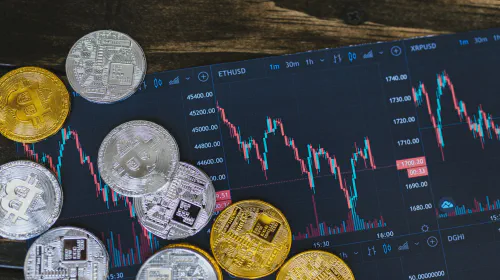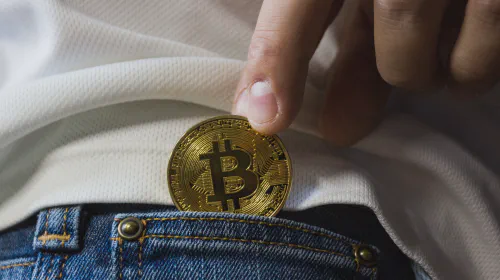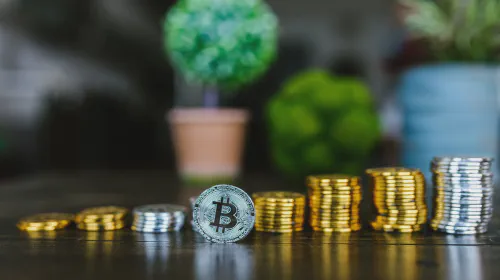What Is Monero, and What Is It Used For?
Salomon Kisters
Sep 30, 2022This post may contain affiliate links. If you use these links to buy something we may earn a commission. Thanks!
Monero (XMR), launched in 2014, is an open-source cryptocurrency known for prioritizing anonymity and privacy. Unlike most digital currencies that have transparent blockchain transactions, Monero’s blockchain is designed to be opaque, hiding details like transaction amounts and the identities of parties involved.
Monero provides privacy through stealth addresses and ring signatures. Stealth addresses ensure that each transaction’s destination is hidden, while ring signatures protect the sender’s identity, making transactions untraceable and unlinkable. In 2017, Monero introduced Ring Confidential Transactions (RingCT) to also conceal transaction amounts, enhancing privacy further.
Bitcoin, the first and most well-known cryptocurrency, offers limited privacy since transactions and addresses are visible on its blockchain. Monero, on the other hand, ensures fungibility, meaning each XMR token is indistinguishable from another, avoiding the risks of transaction history affecting the token’s value or use.
Monero’s mining process is accessible, allowing individuals to mine using standard computers without needing specialized hardware like ASICs. This inclusivity aligns with Monero’s principle that everyone should have equal opportunity to participate in the network.
While Monero’s privacy features have attracted users seeking confidentiality, they have also facilitated illicit activities, making it a preferred currency in dark web marketplaces and for criminal operations. This dual nature presents challenges in regulating and monitoring its use.
Is Monero a Tool for Money Laundering?
The Privacy and Money Laundering Debate
Monero is often in the spotlight due to its privacy-centric design, which obfuscates transaction details, leading to suspicions of money laundering. While these features make Monero attractive for maintaining user anonymity, they also raise concerns regarding its potential misuse for illicit activities.
Law Enforcement’s Tracing Capabilities
Despite Monero’s robust privacy measures, law enforcement has developed techniques to trace transactions in some cases, as evidenced in incidents like the $4.5 billion Bitcoin heist. This demonstrates that Monero, while challenging to trace, is not entirely beyond the reach of forensic analysis.
Regulatory and Exchange Responses
The difficulties in monitoring Monero transactions have led some exchanges to delist it, citing regulatory compliance and anti-money laundering standards. This move reflects the ongoing struggle between maintaining privacy and ensuring financial transparency.
Monero: Traced or Untraceable?
While Monero boasts advanced privacy features that complicate transaction tracing, it’s not completely untraceable. Research and real-world examples indicate that with the right tools and methods, tracing Monero transactions is possible, albeit with a lower success rate than more transparent cryptocurrencies like Bitcoin.
The Complexities of Banning Monero
Monero’s decentralized nature makes it difficult for governments to enact a complete ban. Regulatory actions tend to focus on exchange platforms, limiting the ease of converting Monero to and from fiat currencies. The cryptocurrency remains accessible and operational, despite not being universally accepted by all financial institutions.
Global Regulatory Landscape
Regulations around Monero vary globally, with some countries imposing outright bans or restrictions on privacy coins due to concerns over illegal activities. However, a worldwide consensus or enforcement against Monero specifically remains elusive, highlighting the ongoing debate over privacy versus regulation.
Conclusion
Monero’s journey is marked by its commitment to privacy, attracting both legitimate users and regulatory scrutiny. While its privacy features pose challenges for tracing and anti-money laundering efforts, Monero continues to be a significant player in the cryptocurrency landscape, embodying the ongoing tension between anonymity and transparency in digital finance.
Stay informed with the latest insights in Crypto, Blockchain, and Cyber-Security! Subscribe to our newsletter now to receive exclusive updates, expert analyses, and current developments directly to your inbox. Don't miss the opportunity to expand your knowledge and stay up-to-date.
Love what you're reading? Subscribe for top stories in Crypto, Blockchain, and Cyber-Security. Stay informed with exclusive updates.
Please note that the Content may have been generated with the Help of AI. The editorial content of OriginStamp AG does not constitute a recommendation for investment or purchase advice. In principle, an investment can also lead to a total loss. Therefore, please seek advice before making an investment decision.

Can Algorand Be Like Ethereum, and Does It Have a Future?
Today, we will be closely looking at how Agorand compares with Ethereum and whether this new, emerging cryptocurrency has a prosperous future or not.

Ethereum vs. Cardano - What's the Difference?
Those who are well versed in the world of cryptocurrency undoubtedly know about the Cardano vs. Ethereum debate. Let's explore.

Ethereum vs. Dogecoin - What's the Difference?
This article will explain what makes Ethereum and Dogecoin unique and how they compare with each other.
Protect your documents
Your gateway to unforgeable data. Imprint the authenticity of your information with our blockchain timestamp